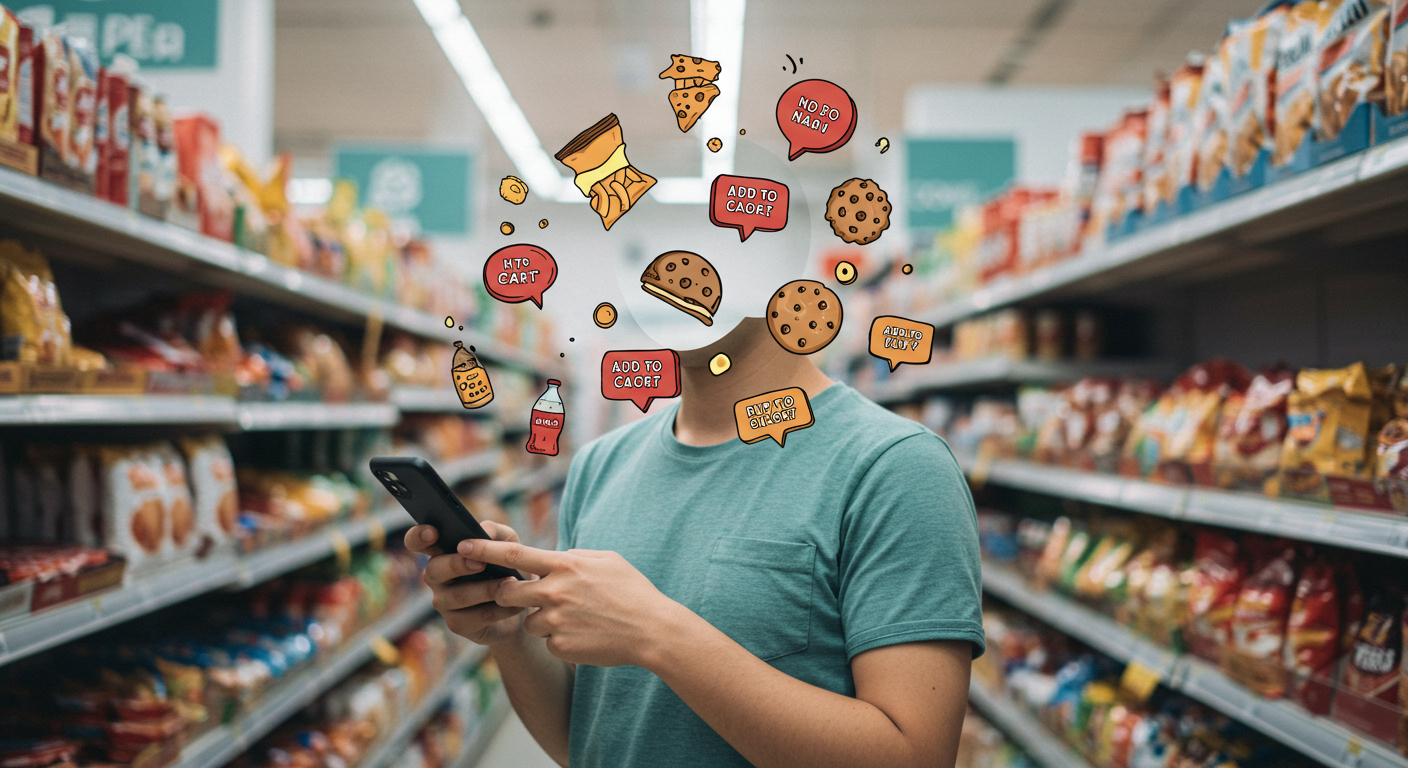By Mofeoluwa Awe
Once upon a checkout line, impulse buying was all about the thrill of the unexpected. A bar of chocolate tossed in at the last second. A fizzy drink that winked at you from a refrigerator near the till. A bag of salty chips that felt like a well-earned reward after surviving the supermarket. Unplanned. Unprompted. Unapologetically emotional.
But today, impulse buying isn’t dying, it’s transforming. Quietly. Almost unnaturally. Shopper studies now reveal that over 75% of purchases in traditional impulse categories, chocolate, confectioneries, cookies, salty snacks, and fizzy drinks are now planned before a shopper even walks into a store.
Yes, you read that right. Planned. Pre-mediated. A decision made in the calm before the retail storm.
It’s a paradox of our times. The spontaneity we once trusted to our gut has now been outsourced to shopping lists, mental notes, and saved items in our e-carts. The new impulse? It starts before we even leave the house, scrolling Instagram, watching snack hauls on TikTok, clicking “Add to Cart” on a 10% off notification we didn’t ask for. The checkout line has moved. It’s no longer at the store. It’s on your screen.
So, what happened to our impulsive selves? Are we getting more disciplined? More frugal? More…. boring?
Not exactly.
To understand what’s realty going on, we need to take a stroll through the brain, where every buying decision lives long before your hands reach for the goods. Enter: System 1 and 2; the two modes of thinking proposed by psychologists Daniel Kahneman and Amos Tversky.
System 1 is fast, emotional, intuitive. It’s the voice that whispers “go ahead, treat yourself” as you pass the cookie aisle. It doesn’t think. It feels.
System 2, on the other hand, is slow, rational, analytical. It’s the part of you that makes a list, sets a budget, reads labels, and tries to avoid sugar after 8pm.
For years, impulse buying was credited to System 1, all heart, no head. But the lines have blurred. The reality today is more layered. Shoppers still crave indulgence. Still want the thrill. But they also want to feel in control. So now, they plan to indulge.
They schedule their spontaneity.
Sounds absurd? Welcome to modern consumer behaviour.
This shift is being driven by more than just psychology, it’s a cocktail of algorithms, content creators, convenience, and curated temptation. Targeted ads know exactly what kind of cookie you didn’t know you were craving. Grocery apps nudge you with “frequently bought together” combos. Loyalty programs learn your indulgent patterns and reward you for repeating them.
Social media takes it a step further. The chocolate bar that used to tempt you from the checkout counter now pops up in a beauty influencer’s “What’s in my bag” reel. Your next fizzy drink isn’t discovered on a whim, it’s pre-loaded in your mind from a late-night scroll through a Gen Z taste test. By the time you walk into the store or click through a delivery app, your “impulse” has already been subtly scripted.
This doesn’t mean consumers are becoming robots. Far from it. What it means is that impulse is no longer random, it’s predictable. And if brands are listening (they are), they’re designing experiences that speak to both brains, the one that wants to plan, and the one that wants to feel like it didn’t.
The result? An evolved form of indulgence. One that’s no longer a guilty pleasure but a pre-approved reward. One that says, “I know I’m going to give in, so I might as well do it wisely.”
So, where does this leave the marketer? The retailer? The dreamer building the next crave worthy snack?
It means the game has changed.
You’re not just fighting for the shopper’s eye at the shelf, you’re fighting for space in their subconscious, in their saved-for-later lists, in their “must try” screenshots. If your product isn’t part of the plan before they enter the store, chances are, it won’t be part of the bag they walk out with.
Impulse buying hasn’t disappeared, it’s simply adapted. It’s the same craving, dressed in strategy. The same indulgence, cloaked in planning. The same shopper, with a sharper sense of what they want, and when they want it.
The question is: Are we still impulsive if we plan to be?
Maybe. But in a world where everything moves faster, maybe planning your pleasure is the most impulsive thing you can do.
Read also: The new currency: how the attention economy is reshaping brand building







Comment
No comments found.